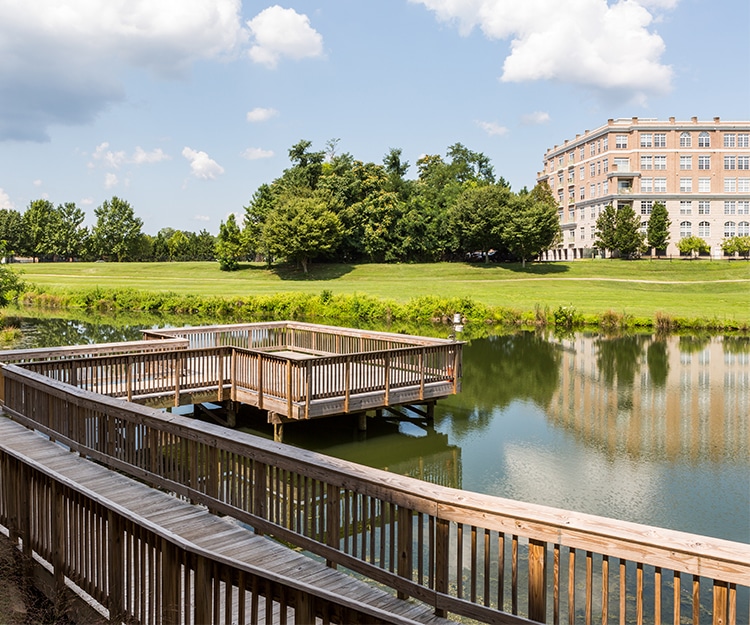Belmont Bay, Prince William County, VA
Potomac Science Center
Research Lab Uses Site as Education Tool
status
Completed 2017
client
George Mason University
expertise
Public Realm + Open Space, Education
services
Landscape Architecture

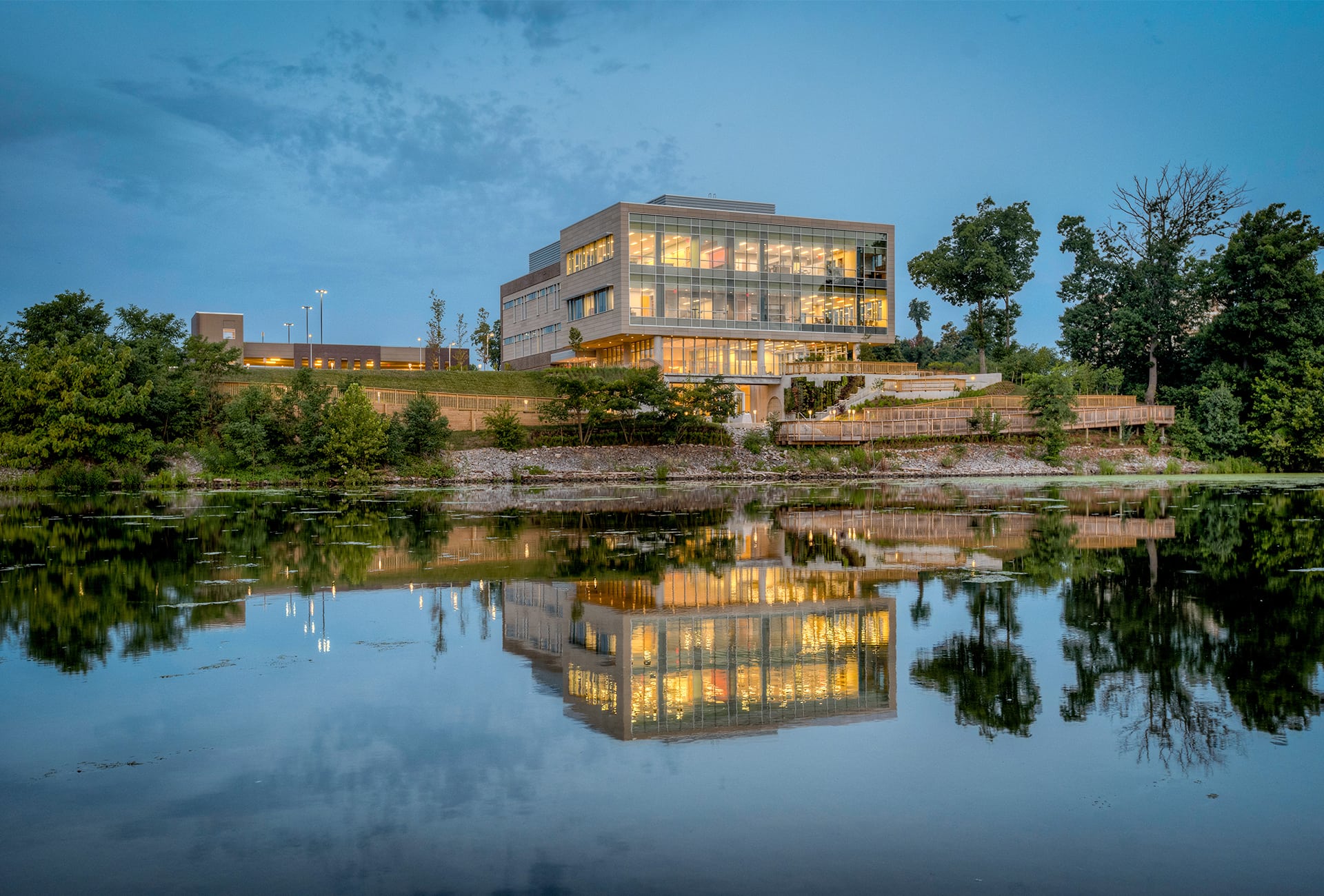
Water Quality Research on Display
As the first water quality research center in Virginia to be located within the Chesapeake Bay Watershed, the Potomac Science Center was designed to support the Center's education and environmental mission.
The Potomac Science Center (PSC), an extension of George Mason University (GMU), is the premier tidal freshwater research lab facility within the Chesapeake Bay watershed. Perched on the bank of the Occoquan River in Prince William County, Virginia, this 50,000-square-foot environmental science research facility features direct river access, allowing GMU research faculty and students to easily access water for samples, experiments, and excursions. The research facility incorporates laboratories for teaching and research, lecture halls, event space, and outdoor education areas — all intended to support the Center’s mission of research, restoration, education, and public outreach.
LandDesign was engaged to create an outdoor environmental setting for the Center that unites the building with landscape and invites the public onto the site. Designed to meet LEED Silver certification standards, the project includes a variety of educational and environmental features, including a research dock, rain gardens, an outdoor amphitheater used as a classroom and educational event space, and the use of low-impact development techniques such as pervious pavers and elevated boardwalks. To highlight these elements, LandDesign crafted a “Water Story” that teaches how stormwater management and other low-impact design techniques are integrated into the landscape.
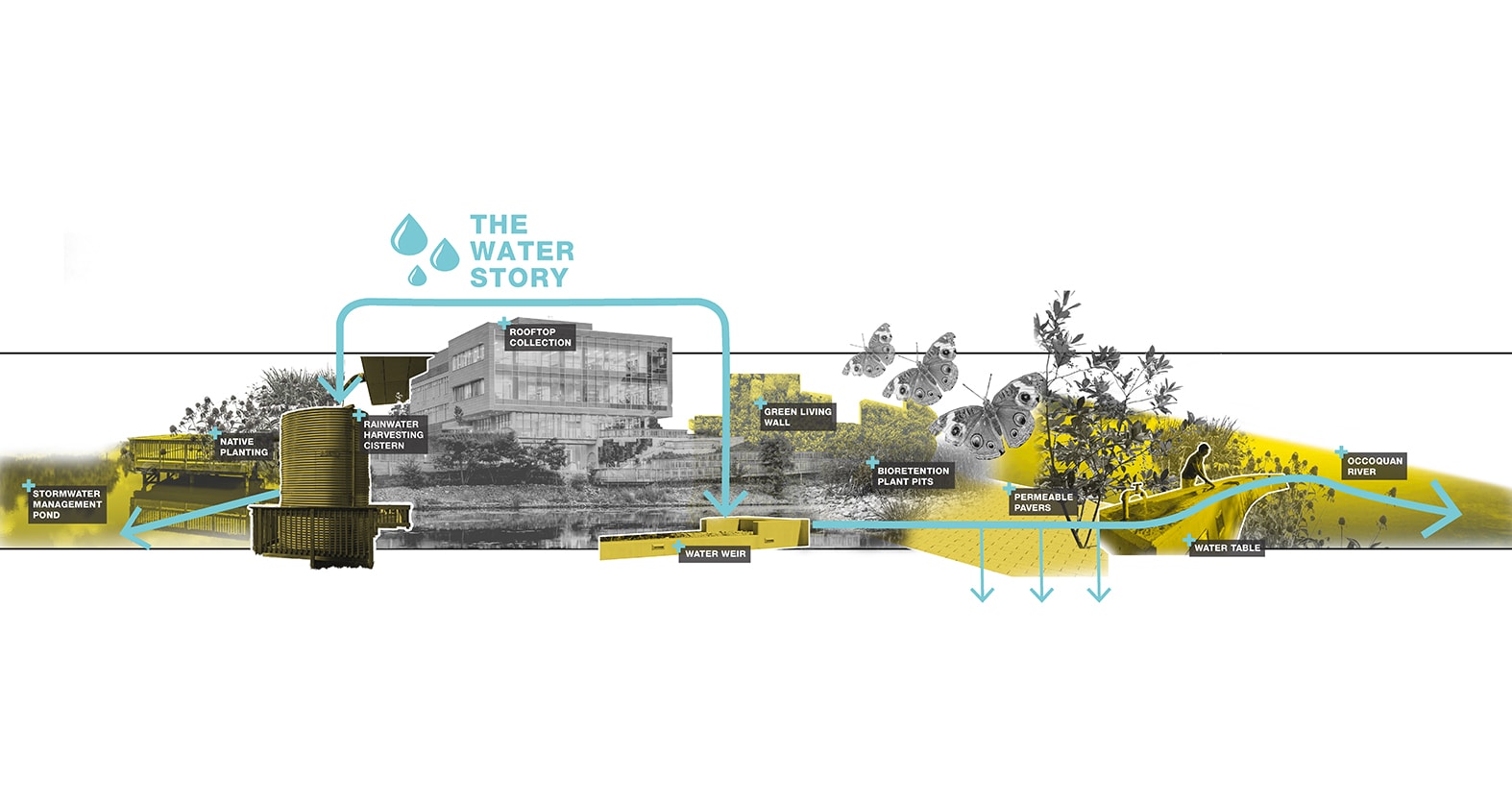
With water and its intersection with human and natural ecosystems as a unifying theme, a primary focus of the PSC site design is the “Water Story” — details as educational storytelling features, showcasing the site’s environmental goals. Each roof drain for the building is intended to connect to a specific “Water Story” feature, where visitors can follow the path of rainwater. At the building’s entrance, a weir and scupper water feature directs runoff from the roof into a rain garden, where it begins its journey of purification. The rainwater flows through a series of bioretention plant pits, infiltration swales, and other stormwater management elements until it reaches its final outlet — either the river or a 5,000-gallon rainwater harvesting cistern to be used for irrigation on-site. Additional educational features include a green living wall, native plantings, a rain chain, and permeable pavers. All the “Water Story” elements were designed to be used as teaching tools for testing water quality, inviting researchers and members of the public to interact with the site.
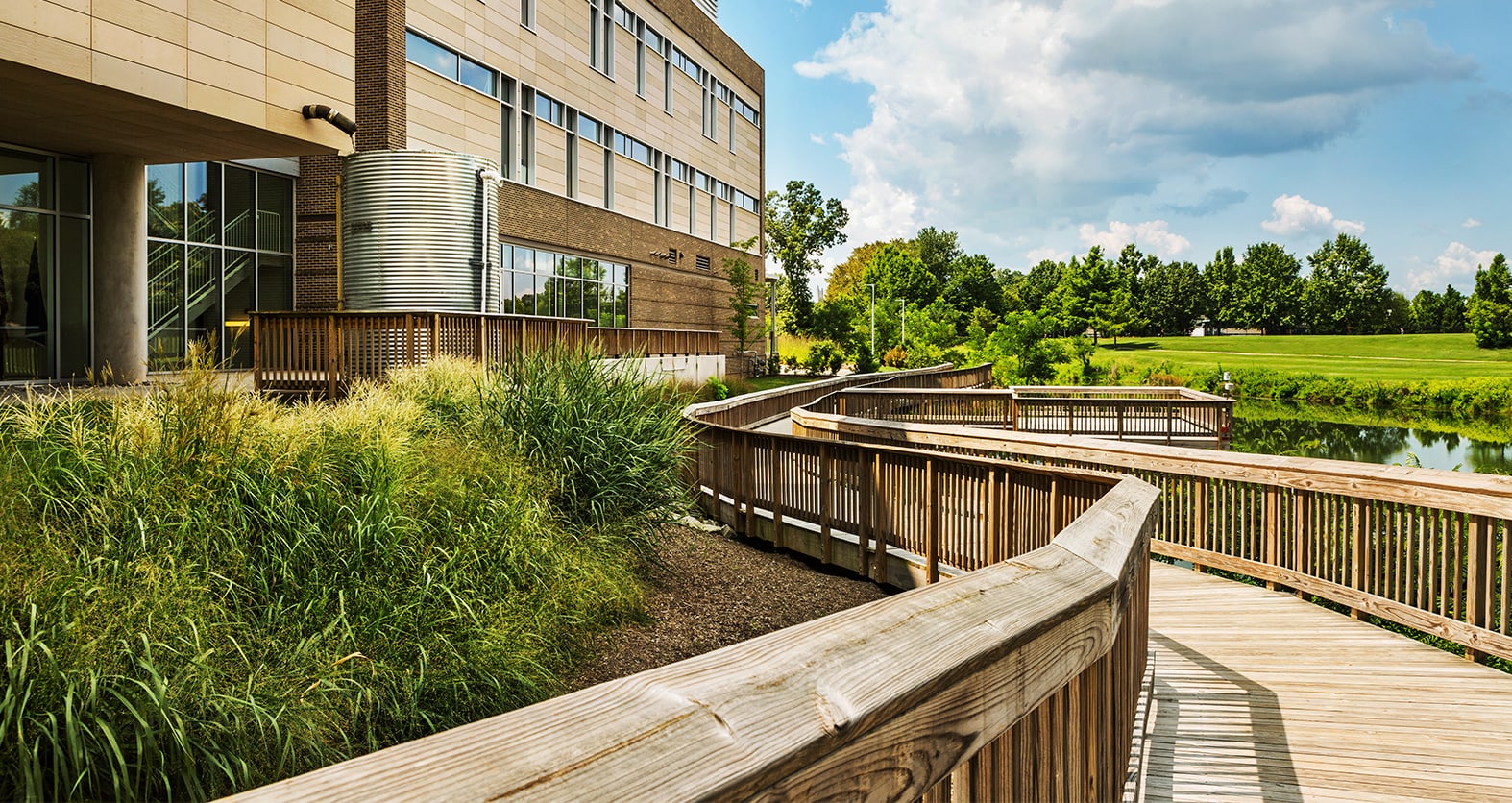
Selected for its ability to provide direct access to the river, the Potomac Science Center’s location on the Occoquan River is essential to the education, research, and public outreach that occur at the facility. With 15 feet between the upper level research facility and lower river level research dock and plaza, the design team was tasked with sensitively integrating the building into the site while maintaining ADA access to the river. To address this challenge, a wooden boardwalk was installed over the riparian buffer, providing an accessible route over the significant grade change while minimizing land disturbance.
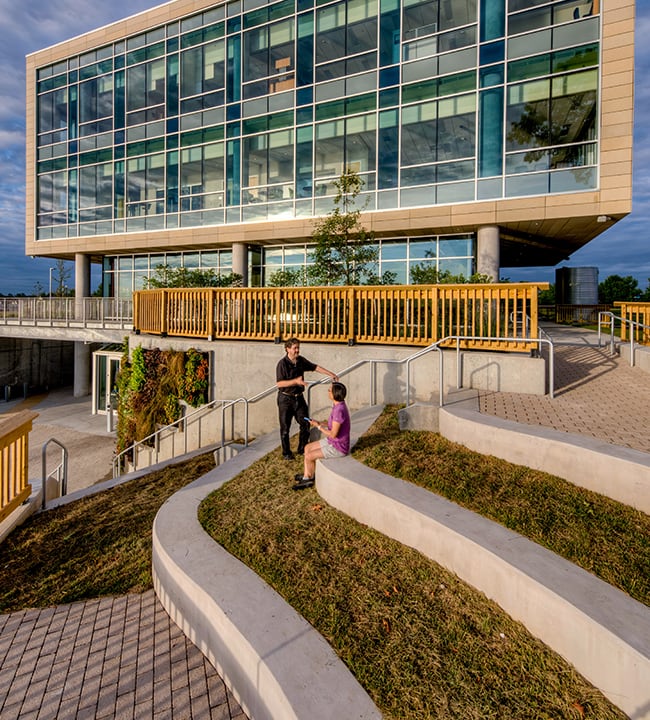
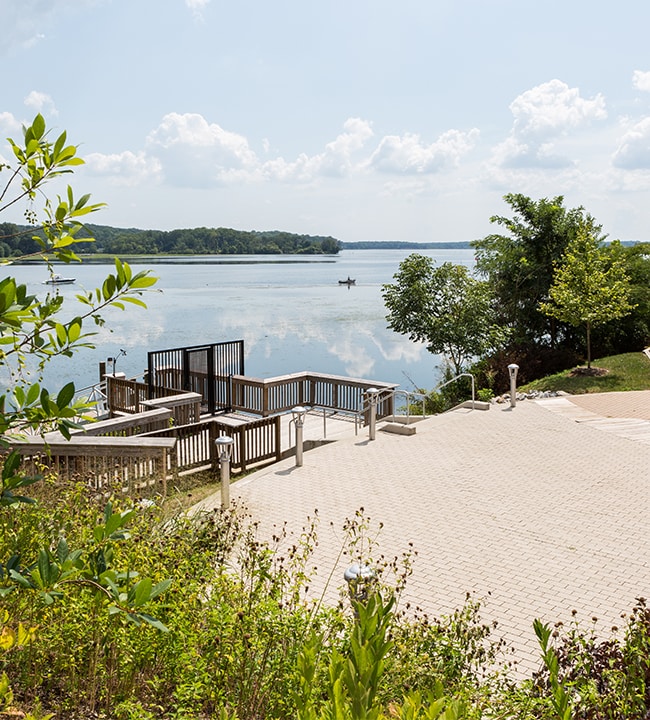
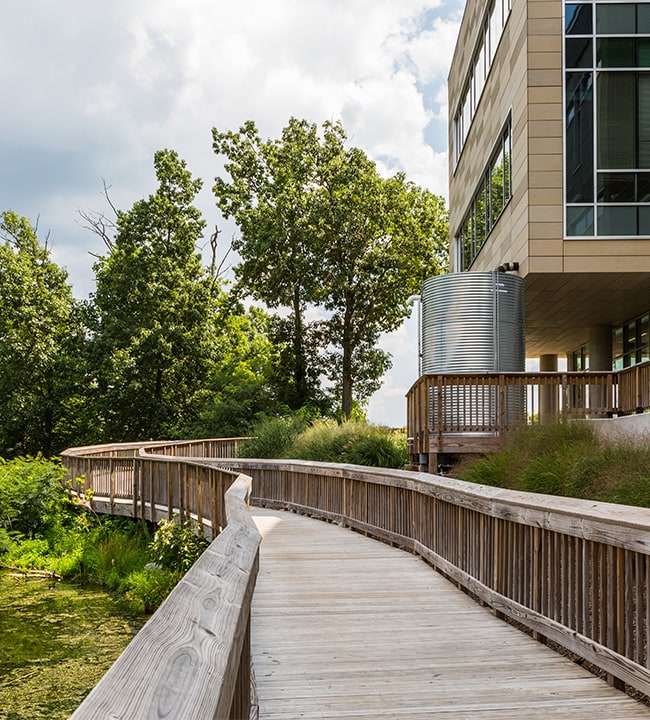
Physical
Provide direct access to the river while limiting disturbance, using boardwalks and terracing to overcome grade change
Functional
Highlight the University’s research activities at the riverfront with dual environmental and educational design features
Social
Design a welcoming landscape with direct trail access that invites the general public to visit and engage with the site

Physical
Provide direct access to the river while limiting disturbance, using boardwalks and terracing to overcome grade change

Functional
Highlight the University’s research activities at the riverfront with dual environmental and educational design features

Social
Design a welcoming landscape with direct trail access that invites the general public to visit and engage with the site
An Extension of the Classroom
The outdoor space features a research dock, a terraced amphitheater, and a custom “water table” where students can learn about water quality, erosion, and the river ecosystem. Users are invited to actively engage through educational programs hosted by the GMU researchers and passively through the Potomac Heritage National Scenic Trail, a multi-modal National Park Service Trail that was preserved and relocated directly through the Center as part of the development.
